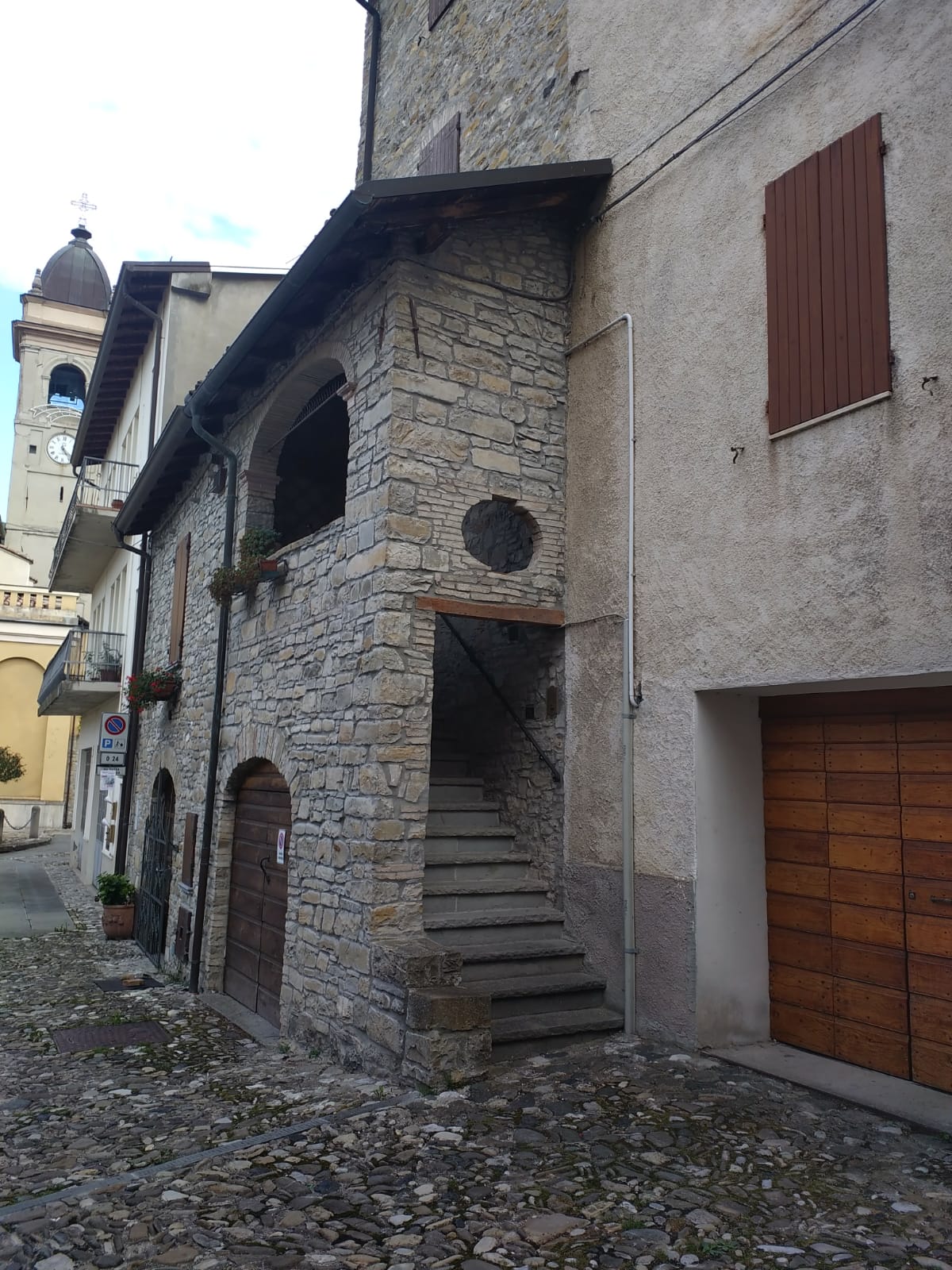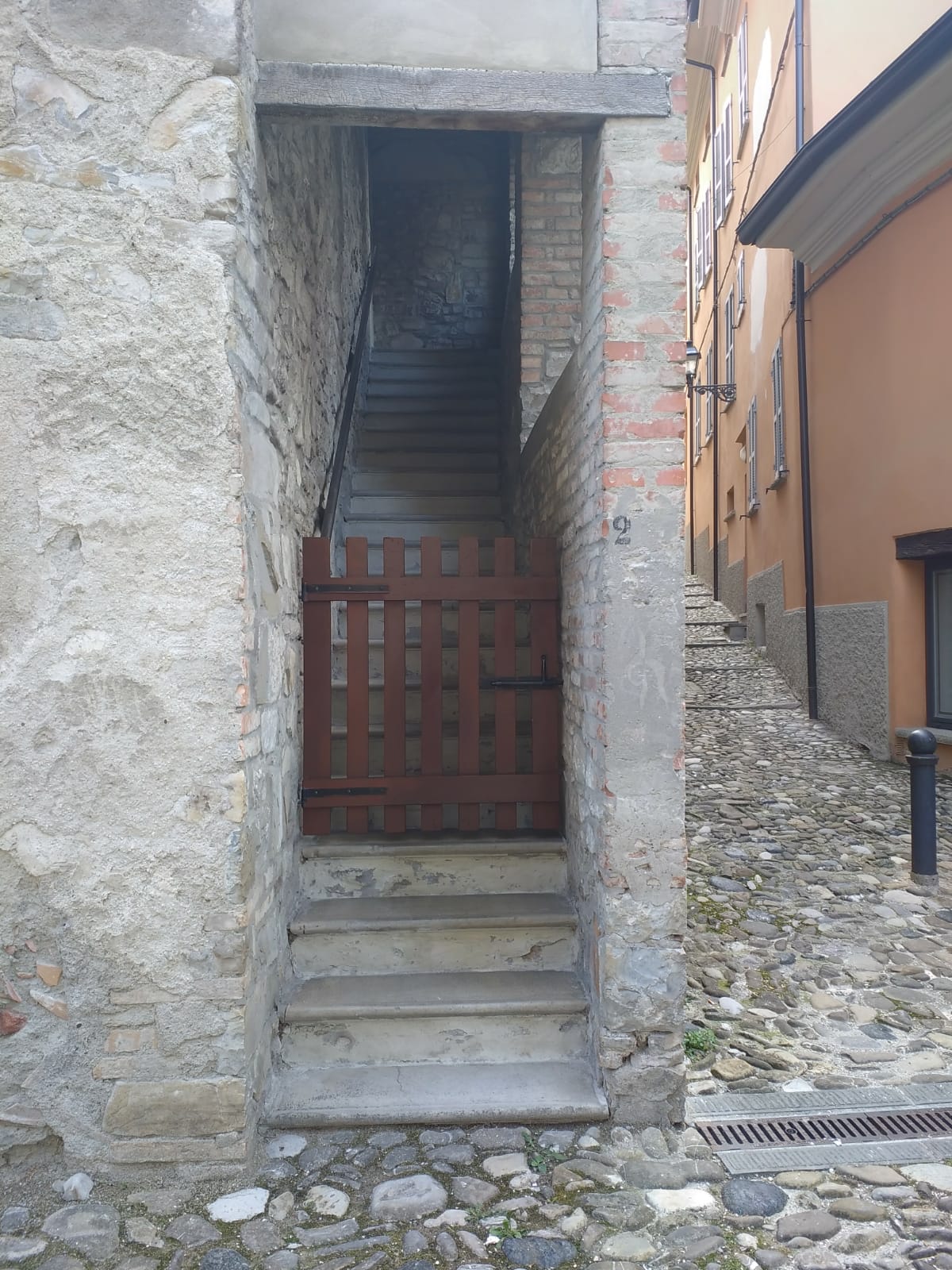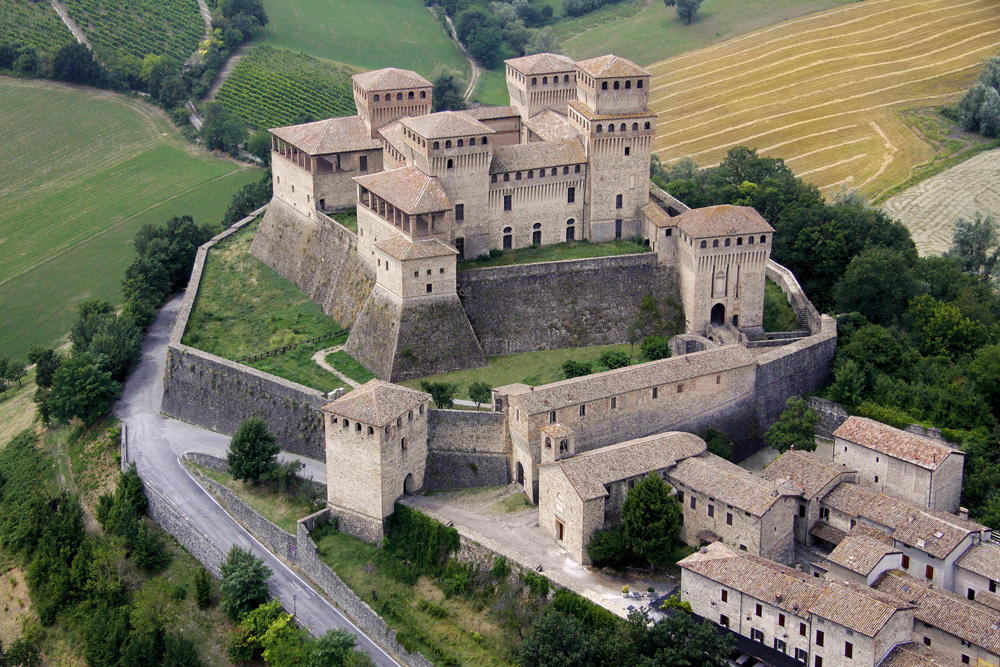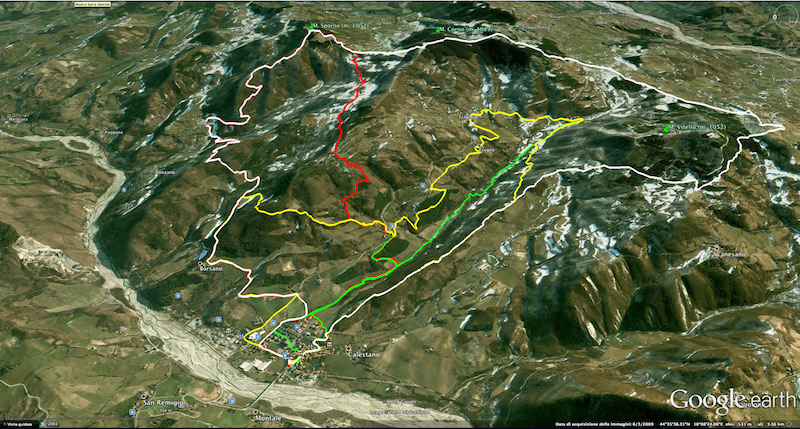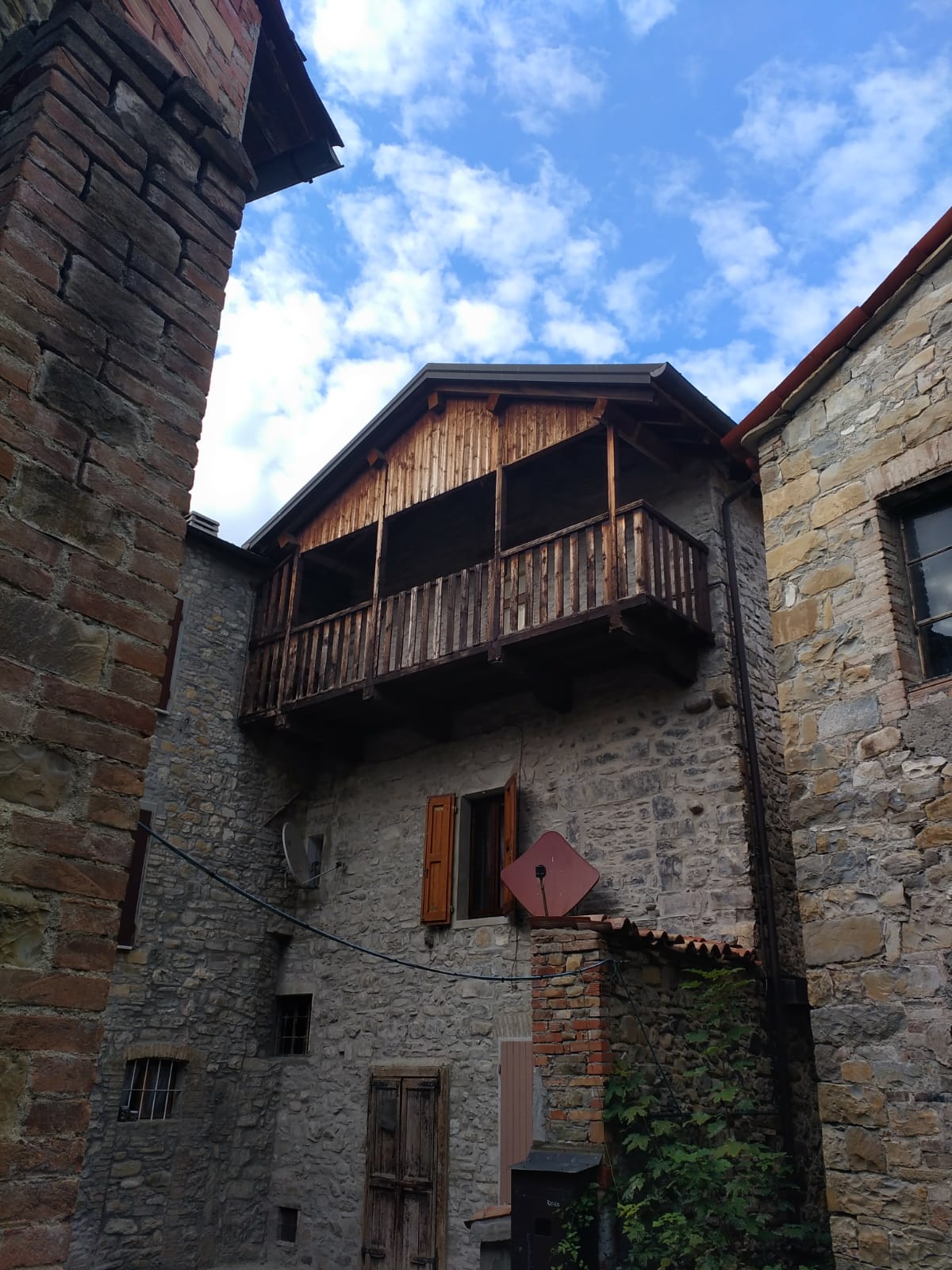
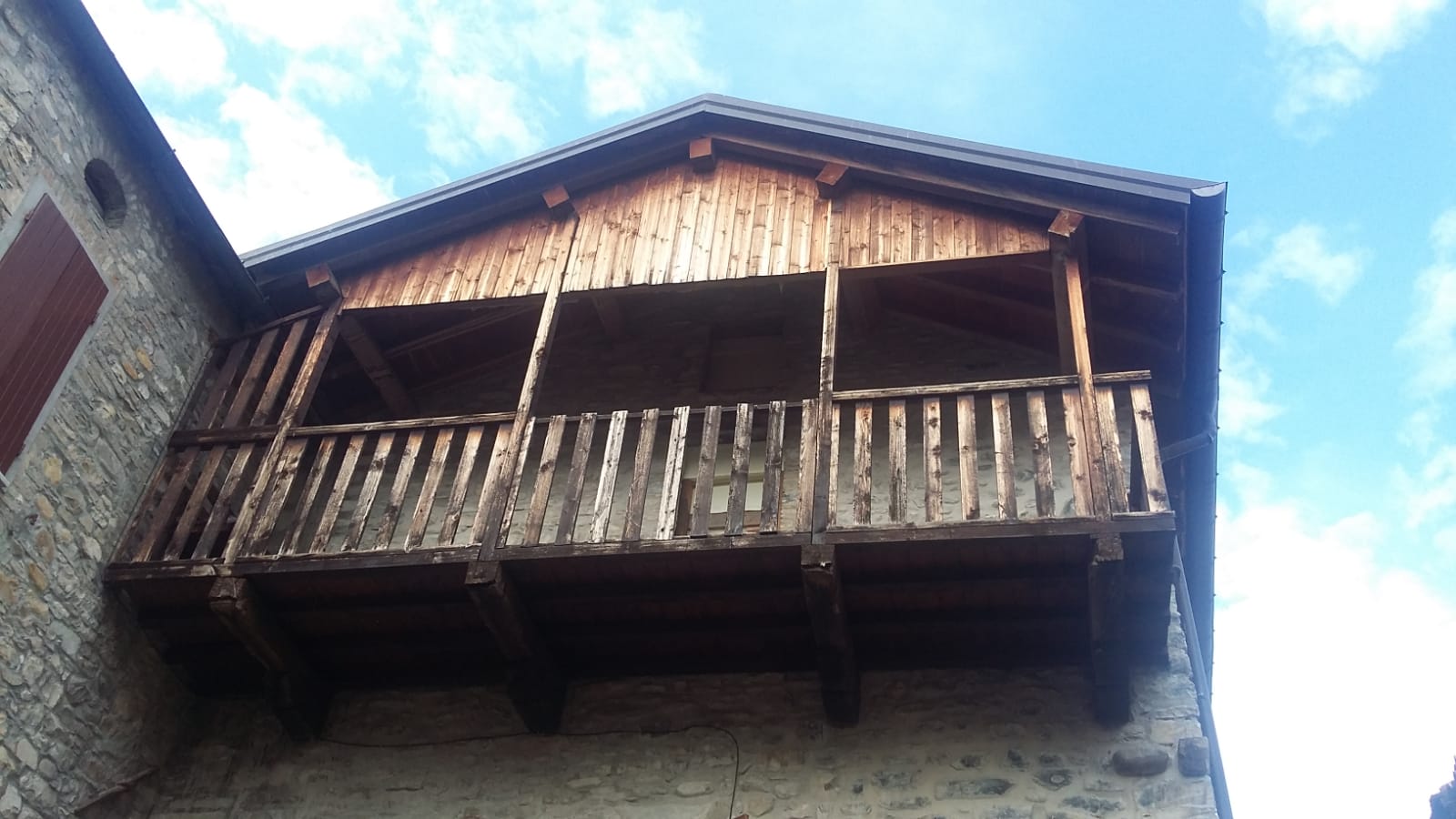
Il XV secolo è un periodo fortemente influenzato dalle lotte di fazione tra famiglie feudatarie rivali.
Le esigenze di una strutturazione difensiva militare del territorio, originò nuove fortificazioni che conservano per lo più il primitivo carattere feudale, abbinando la funzione difensiva con quella abitativa per tutto il ‘600. Si assiste inoltre all’introduzione del balchio quale elemento esterno di distribuzione e di accesso all'edificio. L'ingresso è posto al primo piano tramite un portale a cui si accedeva mediante scale di legno mobili, frequente era l'apertura di altri portali che davano l'accesso a ballatoi che girano intorno alla torre come testimoniano i fori regolarmente distanziati nel paramento murario.
Altri esempi in muraura in paese.
CURIOSITÀ : Nel complesso dietro il balcone di legno e la torre, abitavano Paolo Boschi, il “famigerato bandito” ex gendarme ducale, e la moglie (figlia del vecchio medico condotto
dott. Ramolini, già anche podestà di Calestano) e la bottega prospiciente la via centrale
(odierna via Mazzini) ospitava la loro rivendita di tabacchi.
Si dice, secondo un racconto orale, che Boschi, il 20 maggio 1861, si sottrasse all’arresto guadagnando il tetto di casa sua e dopo una corsa di 40-50 metri per altri tetti, con un gran salto colmò il vuoto di un borgo sottostante, fu in un giardino elevato (l’ “ortàs” di Borgo Manone) ed in breve fuori dal paese, verso il monte, guadagnandosi la libertà.
La sua latitanza durò fino al 4 giugno 1872, quando fu catturato in Corsica.
Il 13 giugno 1873 la lettura della sentenza condannava Boschi alla pena di morte; sentenza che quattro mesi dopo la conclusione del processo, venne annullata dalla corte di cassazione di Torino.
...e la Gazzetta comunicò la notizia ai suoi lettori:”Siamo lieti di annunciare che il bandito Paolo Boschi da Calestano è stato arrestato il giorno 4 corrente a Ghisoni, in Corsica......”.
Paolo Boschi. Oggi è un nome che lascia indifferenti, ma negli ultimi decenni del secolo XIX e nei primi del 1900 era quasi leggendario e la sua fama corse in tutta la provincia e anche fuori provincia si parlava di lui.
Così la Gazzetta di Parma aprì il suo primo servizio sul processo che si svolse in Parma nel maggio-giugno 1873 contro quel nome e l’uomo che lo portava: “Nessuno certamente dei nostri lettori ignora il nome di Boschi Paolo, nome che da più di dodici anni corre di bocca in bocca nella nostra città e provincia, come uno spauracchio da fanciulli, e circondato di tutto quel mistero e di tutti quei racconti più o meno credibili, più o meno esagerati di cui è sempre eroe un individuo caduto in potere delle leggende volgari” (Gazzetta di Parma, 26 maggio 1873).... (da “Calestano ‘85”)
The XV century was an historical period influenced by struggles between rival feudal families .
The need to erect military difensive structures in the area , gave rise to new fortifications with primitive feudal character, withc combined the function of dwelling and defens throughout the 16 century.
The Typical stucture of this period is the BALCHIO , an external wooden element, used to distributed genrs and hold rallies to the people . The entrance to the BALCHIO was located on the first floor through a portal wich was accessed with wooden escalators.
Thoughout the town it was frequent to find others portals that gave in to balconies around the tower, as evidence by the regular and spaced holes on the facade wall .
There are many examples of Balchio in masonry throughout the village .
FUN FACT: behind the wooden balcony and the tower lived Paolo Boschi, the "notorious bandit" ex ducal gendarme, and his wife (daughter of the old doctor
dr. Ramolini, formerly also mayor of Calestano) and the shop overlooking the central street
(now via Mazzini) housed their tobacco shop.
It is said, according to an oral account, that Boschi, on May 20, 1861, escaped arrest by gaining the roof of his house and after a run of 40-50 meters for other roofs, with a great leap he filled the void of a village below, it was in an elevated garden (the “ortàs” of Borgo Manone) and soon outside the town, towards the mountain, gaining freedom.
His inaction lasted until June 4, 1872, when he was captured in Corsica.
On June 13, 1873, the reading of the sentence condemned Boschi to the death penalty; sentence that four months after the conclusion of the trial, was annulled by the Court of Cassation of Turin.
... and the Gazzetta communicated the news to its readers: "We are pleased to announce that the bandit Paolo Boschi da Calestano was arrested on the 4th in Ghisoni, Corsica ......".
Paolo Boschi. Today it is a name that leaves you indifferent, but in the last decades of the nineteenth century and in the early 1900s it was almost legendary and his fame spread throughout the province and even outside the province was talked about.
Thus the Gazzetta di Parma opened its first report on the trial that took place in Parma in May-June 1873 against that name and the man who bore it: "Certainly none of our readers is ignorant of the name of Boschi Paolo, a name that gives more twelve years old he runs from mouth to mouth in our city and province, like a child's bugbear, and surrounded by all that mystery and all those more or less credible, more or less exaggerated tales of which a fallen individual is always the hero of vulgar legends "
